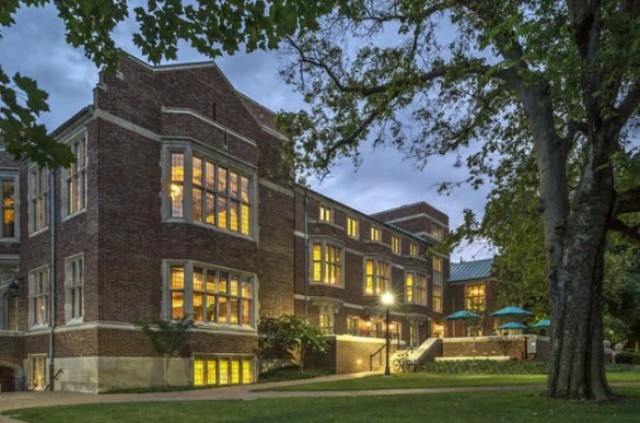Nov 11 2015
Alumni Hall has received LEED Gold certification from the U.S. Green Building Council for its recent renovation and addition. LEED stands for Leadership in Energy and Environmental Design and is a certification program that sets the standard for environmentally responsible construction in the United States. Alumni Hall, which was originally constructed in 1924, has been renovated to include many new green features while maintaining much of its historic character.
 Alumni Hall (Vanderbilt University)
Alumni Hall (Vanderbilt University)
Alumni Hall was first used as the campus’s original student center for 50 years until Sarratt Student Center opened in 1974. Since its construction, the building has served many purposes, from administrative offices to student spaces. Today, Alumni Hall includes a classroom, student lounge and study space, a café, offices and a gym.
In 2011, the building was added to the National Register of Historic Places for its architectural significance. The renovation of Alumni Hall was approved by the Board of Trust in 2011, and construction began in spring 2012.
“The renovation of Alumni Hall was a special project for Vanderbilt,” said Paul Marshall, campus planning and construction architect and Alumni Hall project manager. “We were able not only to restore a historic building to its original purpose as a student center, but we were able to preserve much of the history of that building while bringing it into the 21st century technologically.”
During the renovation, careful attention was paid to ensure historical features of the building were preserved. Much of the millwork was repaired and reinstalled, the windows were disassembled and rebuilt to include the original cathedral glass, and other design elements were either preserved or restored in the building.
To achieve its LEED Gold certification, Alumni Hall’s energy efficiency, water efficiency and indoor air quality were significantly improved. An innovative technology called variable refrigerant flow was installed that cools and heats air by moving a refrigerant through pipes instead of moving air through a duct system. This method is not only extremely energy efficient, it also takes up much less space than a traditional heating and cooling system, allowing the original design details of the building to remain.
In order to preserve the historic windows while increasing the efficiency of the building, the cathedral windows were restored and secondary panes were installed on the interior of the building, creating windows with modern efficiency. The building was also made more energy and water efficient by installing an intelligent lighting system, increasing insulation and installing low-flow bathroom fixtures.
Alumni Hall brings Vanderbilt’s total number of LEED-certified projects to 16. It joins eight other projects on campus that are LEED Gold certified.